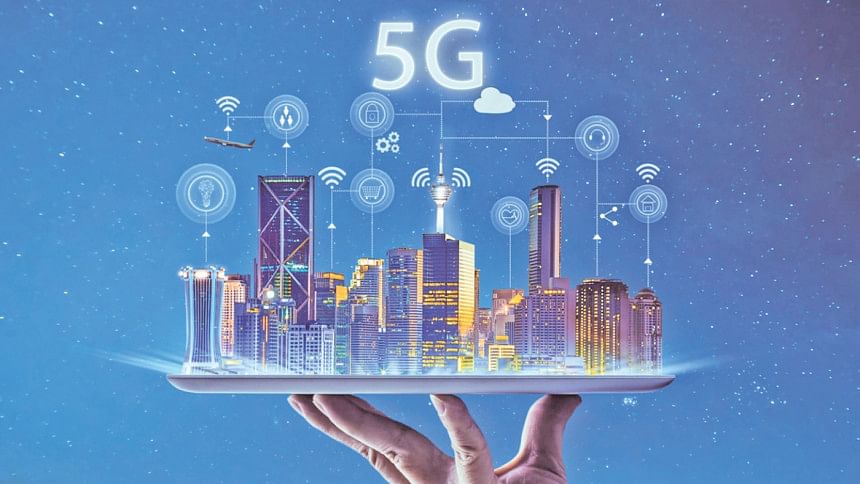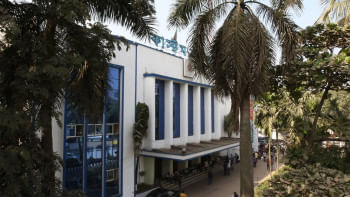The future, according to Huawei Global Industry Vision 2025

At this year's Asia Pacific Innovation Day held in Chengdu, Sichuan, China, networking and consumer technology giant Huawei showcased Global Industry Vision (GIV) 2025. With 5th generation telephony expected to usher in a new age of connectivity and technologies like cloud computing, artificial intelligence and Internet of Things reaching a tipping point, Huawei is predicting a monumental shift in the way humans live, work and move. With GIV 2025, they have identified ten areas where they expect these advanced technologies to come into play, powered by the speed and connectivity of 5G.
Living with bots
Robots, despite the repeated warnings of Terminator movies, are quickly becoming a reality. With connected services and IoT already a mainstay of homes even in developing countries, the next logical step is the introduction of home robots. Function-rich robots powered by perceptual AI is expected to enter the consumer market by 2025, with a range of tasks from mundane reminders to home security is expected to be met.
Super sight
Using machine learning, AR/VR, and 4K/8K video, GIV predicts humans will be able to see more and learn more about the things we see. With super sight, Huawei predicts we will be able to see beyond time and space—by analysing surfaces and historical data, we will be able to recreate everything from shattered archeological artifacts to crime scenes. Super sight also has applications in the manufacturing and mining industries—site inspection and repair will be conducted exclusively by robots, assisted by human engineers from a control room from a safe distance.

Zero search
Similar to super sight, zero search will streamline maintenance and repair by making these tasks predictive and automated. With machine learning playing a crucial role, AI operated bots can take over rail and flight maintenance by laying out a maintenance plan that just needs to be vetted by senior engineers. With time, overseeing these mundane tasks will be reduced as zero search enables engineers and technicians to focus on advanced safety features, instead of spending time on finding faults and assessing wear and tear on machinery.
Tailored streets
Nascent connected car technology will only get more advanced with time, and as the number of connections increase, so does the potential for optimising city traffic. With the advent of 5G, these connections will become more active and help with the transfer of information from vehicle to vehicle. GIV 2025 predicts a network of connected vehicles that can recognise and automatically make space for emergency vehicles, not to mention suggest better routes in trying to avoid congestion. At the same time, self-driving technologies can benefit from connected car tech, as vehicles communicate to make the streets safer for pedestrians and passengers alike.
Working with bots
Fire-fighting, surgery, waste-removal, crime-scene clean-up—hazardous work will be a thing of the past for humans as advanced materials technology combines with AI powered robots and connectivity takes a leap. The workplace of the future, whether it's in the emergency services, hospitals, factory floors or even inside corporate spaces, will be dominated by robots that raise efficiency, increase chances of success and generally leave humans to creative endeavours.
Augmented creativity
Huawei believes creativity is one of the biggest areas where human augmenting technology can play a role. With advancements in hardware, humans will be better at identifying key elements within art, design, music, composition and more—thus enabling the creation of a huge library of knowledge of the arts that any amateur can work with to create their originals.
Frictionless communication
With all of our uniting factors, humans still have major barriers to access when it comes to areas like national borders, language and information access. Huawei's GIV 2025 predicts that, with the rise of connected devices, communication across these key areas will be seamless. From real-time AI powered translation devices, to data-driven tailored advertising, to information terminals at airports and bus/train stations that predict your needs as you approach, travelling to a strange new place need not be daunting anymore—even if you are a business looking to go global. Customer needs, habits and wants will be factored in—with privacy being paramount, of course.
Symbiotic economy
As a direct by-product of the above factors and more, the economy is predicted to be better at prediction—with connections reaching critical mass, policy-makers will be better equipped to assess everything from business cycles to the health of the economy. Digital services will depend on one another and the economy will grow beyond unprecedented levels as a result of it.
5G's rapid rollout
GIV predicts that by 2025, there will be 6.5 million 5G base stations deployed and 2.8 billion 5G users around the world. Full 5G coverage will be available to 58% of the world's population, creating new business models, new services and applications, and a new level of experience.
Global digital governance
With so much data floating around (predicted to be a total 180 zetabytes or 180,000,000,000 terabytes in 2025), data privacy and data-driven businesses will be in a position to hash out terms and balance the rights and needs of data owners/users. Digital governance in the form of protecting data assets will see a huge wave of policy makers striving to treat the matter with urgency, with informed regulation playing a crucial role in maintaining standards across borders and governments in the interests of citizens.

 For all latest news, follow The Daily Star's Google News channel.
For all latest news, follow The Daily Star's Google News channel. 



Comments